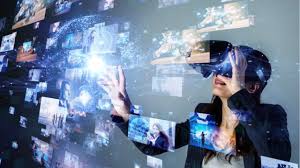Source: retailcustomerexperience.com
Artificial intelligence is touching almost every industry in the ongoing era of digital transformation. But what does it mean? Put simply, AI and machine learning — a closely related idea — are computer programs that emulate and learn human behavior to then make autonomous decisions. AI can be especially transformative in retail, helping almost every aspect of a retailer’s business — from utilizing data to drive sales, to automating the supply chain, or to hyper-personalize the customer experience.
While AI can sound like some far-off idea, it’s closer than you may think. Juniper Research, for example, predicts retailers will spend $7.3 billion on AI by 2022, compared with the approximately $2 billion that was spent in 2018.
AI is quickly becoming more appealing than conventional software, which generally requires someone to think about all the possible ways you might want it to do something, and then write programs or code for each one of those tasks.
Having systems that utilize AI to continually learn and train themselves allows technology to be much more powerful and adaptable to new or changing experiences. While there are many benefits to investing in AI technology, one of the most important for retailers will be the positive impact on customer experience.
Below are some of the ways AI can impact how merchants provide their customers with personalized experiences:
• Mobile shopping assistants powered by AI — One example of an in-store deployment of AI is Macy’s On Call, a shopping assistant powered by IBM’s Watson. Customers can access the bot via an app and then interact with the assistant as they would with a human store associate. The more conversations the bot has, the smarter it becomes. There are many examples of how a real-time intelligent reaction from a bot can help ensure a positive customer experience — one being, if a bot could detect signs of stress or anger on the customer’s face and then alert a human employee to go help immediately.
• Customer service driven by bots – Stores are also implementing physical robots for a variety of reasons, and the use cases for in-store robots only grows as AI becomes more advanced. Can’t find a product? The robot can help. Are more products available in the back? The bot can give you that answer. Softbank created Pepper the AI robot, which can chat with and direct customers, accept secure payments and even just create a novelty experience that can draw in someone passing by. Pepper helped the company report strong numbers in terms of increased revenue and foot traffic after the launch of several pilots.
• AI’s impact online – With what the U.S. Department of Commerce estimates to be $513.61 billion dollars spent online every day, AI isn’t just about improving in-store shopping. There are plenty of ways to incorporate AI into your customer’s online shopping experience as well. Through the power of AI, companies can make recommendations to customers shopping online by harnessing information such as past purchases or browsing history. This helps to cut down on the time it takes for a customer to find items that fit in with what they are looking for.
• Adjusting prices, intelligently — AI can also make a difference in price setting. Algorithms can provide retailers statistically-likely outcomes of various pricing strategies, allowing them to offer the best promotional deals to increase sales and to make — and keep — their customers happy. Through the collection and analysis of vast amounts of internal and competitor data, AI can help support the optimal pricing decision. eBay uses AI-powered pricing and inventory algorithms to help sellers determine the most appropriate prices, and Kroger applies AI in a similar way as well. Having this real-time data analysis provides retailers with the ability to stay flexible, as well as to alter prices and other promotions instantly based on insights from shoppers.
• Bridging the gap between virtual and physical channels — AI caters to the omnichannel shopper — it isn’t limited to either the physical or online shopping experience. Imagine this: A friend is admiring your shoes. She uploads a photo of them to a retail app on her mobile device, which utilizes image recognition AI to identify and locate the product. The app can then bring her to the product on a store’s website, while also recommending nearby locations that carries them. AI can connect customers across the digital and offline channels of stores, giving them a seamless experience as well as purchasing options.
Personalization of the customer experience across sales channels is something that will only increase in popularity as consumers continue to demand it. In order to stay relevant and successful, retailers need to be aware of this, and use tools like AI to ensure the experience is a positive one. AI is a game-changer, and utilizing it can transform the retail experience for customers.


